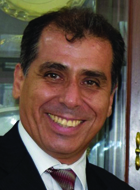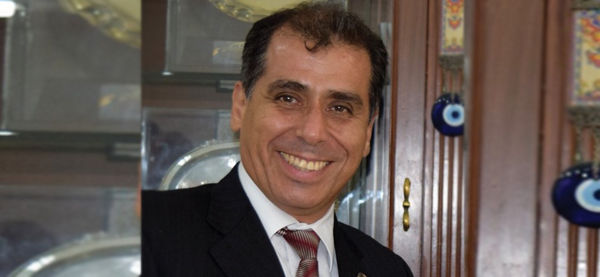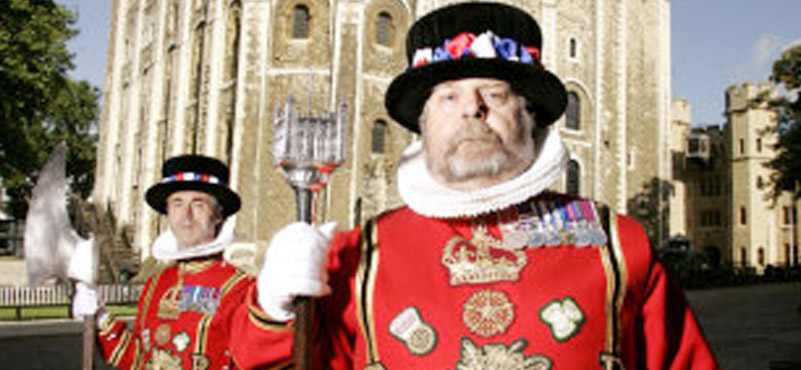Peru is a treasure trove of culture and history, with several World Heritage Sites in its midst – the likes of famed Machu Picchu – pristine ecology and diverse cuisines, making it a destination for tourists seeking varied experiences. Hoping to tap the more experimental and experience-seeking Indian outbound, Peru Commercial Office has trained its sight on a larger share of the lucrative outbound. Excerpts of the interview with Luis Cabello, Commercial Counsellor of Peru in India.
 Give us a sense of how important is tourism for Peru and its economy and where does it stand in list of national priority?
Give us a sense of how important is tourism for Peru and its economy and where does it stand in list of national priority?
Tourism in Peru is an extremely dynamic activity. Millions of jobs are created in Peru every year, because of tourism, which includes people from all walks of life, including those families which otherwise have very little earnings.
According to the data released by Central Reserve Bank (Banco Central de Reserva), tourism sector contributes 3.9% towards the GDP, taking into account only receptive tourism. Nevertheless, if one were to take into account all other activities which are interconnected to the tourism sector, (transportation, provision of food and drinks, hotel options for tourists, cultural industry, recreation and sport industry, taxes and import rights, production and trade of handicrafts, Travel houses and Tourism agencies, and other activities), the multi-sectoral contribution can be seen to be 7%.
Inbound tourism in Peru has risen constantly with the steady arrival of international tourists. In the period 2011 – 2015, the annual average growth rate recorded has been 7.4%, which has converted into an important agent of social and economic development.
Tourism in Peru is the second largest generator of cash in terms of value added products, the only other sector which higher figures being that of agriculture.
Peru has a vast repertoire of tourism offerings but archaeological and cultural tourism seem to be the most important pegs of the nation’s tourism offerings. Could you take us through some key tourism products that has found most traction among tourists?
First of all, I am proud to announce that the World Travel Awards (WTA) have recently selected Peru as the World’s Leading Culinary Destination in 2016. This is the fifth consecutive year that our country has been awarded this recognition. According to this organization, Peru is the best country in the world for gastronomy each and every year, for the last five years, since its very inception in 2012! So, if you want to eat the best food in the world, go to Peru!
Peru is a treasure-trove of destinations rich in natural reserves, flora and fauna, and also culture. People from all over the world have lived fascinated with Peru for thousands of years. That is the reason why we always say: there are thousands of reasons to visit Peru.
We have 12 World Heritage sites which are recognized by UNESCO. Machu Picchu, Nazca Lines, Chan Chan, Sacred Valley of Caral (Lima) are just some of them. These places are meant to be admired, to prove to all of mankind that our ancestors did an amazing job, although many centuries ago! Peru is a country where you can reconnect with nature because 70% of the Worldwide Biodiversity is in Peru. It is a country that lets you breathe deep, doing things that replenish your body and soul. It is because of the efforts of the locals and because of the diversity of our ethnical communities, Peru is a country that keeps its traditions alive. Our country is evolving and doing well. We are proud of our culture, our fantastic gastronomy and a new generation of Peruvian Chefs that are gaining reputation worldwide. Peru is also amazing for couples looking for a special trip where they can explore, experience and enjoy.
Lima, our capital city, is strategically located in our territory and connects with every city in 1 hour on an average. It is the only capital of South America in front of the sea with a variety of options for leisure and corporate tourists.
Lima’s historic centre was declared a World Heritage site by UNESCO in 1991. Beautiful churches, a great number of colonial balconies and gorgeous mansions for the aristocracy are just some examples of its cultural legacy. You must visit the Church of San Francisco with its underground burial sites or catacombs, the Sacred City of Carl, one of the first civilizations in the World, 5,000 years ago. Also, Pachacamac, a pre-Inca site with about 20 pyramids is beautiful. But Lima is so much more: today, the capital city offers art, fashion, music, culture, and endless nights of entertainment.
The city of Ica, just 3 hours away from Lima by bus, is sunny all year round and is a land of sand dunes and fertile valleys, famous for the mysterious Nazca lines. Ica forms a part of the Peruvian touristic circuit given its cultural and natural beauty. It is ideal for adventure tours in the dunes and outdoor activities, like the buggies in the desert. But what makes this place special, are the Nazca Lines. An enigma of immense proportions that is a UNESCO World Heritage site.
Ica is also synonymous with ecology, boasting of two important natural refuges: the Paracas Natural Reserve and the Ballestas Islands. A motor boat ride to check out the stars of Peruvian coastal wildlife, sea lions and Humboldt penguins is mesmerizing.
The city of Cusco was placed on the World Cultural Heritage list by UNESCO in 1983. The main tourist attractions are: the Main Square with its beautiful cathedral and tall fountain tower carved out of a single stone. We also have the San Blas Town with its artisans and artists, and its unique museums and galleries. The Koricancha Temple is built of walls which were originally covered with gold and sites like the fort Sacsayhuaman in the surrounding areas of Cusco which have stones up to 9m of height and 350 tons of weight. Also, not so far from Cusco City lies the Sacred Pisac Complex, and its market for shopping, the Maras Salt Mine, Moray (an agricultural laboratory) and the Ollantaytambo Archeological Temple.
But the Inca Empire extended far beyond the Cusco valleys. Down the Urubamba River you will find many sanctuaries and sites. The most famous being Machu Picchu! A Wonder of the world, it is located in a lower altitude than Cusco city. The flora of this region is so abundant that only in MP and the surrounding areas there exists over 500 types of orchids! Perfect for orchid lovers!
Visitor who are adventure lovers will find countless number of activities which includes outdoor alternatives like trekking (INKA TRAIL), rafting, zipline, cycling, etc. I must also include Puno and the Lake Titicaca, crown of the Altiplano, home of many cultures in this list. This is a very unique destination, with cultures and people with different ethnical roots from those of the Incas.
According to Andean beliefs, the Lake Titicaca is the birthplace of the most powerful God- Sun God, called “Inti”. In addition to that, it is home to the largest lake in South America which is the highest navigable body of water in the world. Up there the air is clear, the colors sharper, and the horizon farther. The possibilities for outdoor activities are immense!
By boat, you can get into the Floating Island of Los Uros, where the top-hatted Uros people live on “islands” made of the reeds that grow in the lake’s shallows. It is also the folklore capital of Peru and the site of the Virgen de la Candelaria- one of more than 3,000 celebrations held in Peru each year.
“Exuberant” is the word that describes the jungle of Peru. The Amazon is the New Natural Wonder of the World. An itinerary should include Iquitos, capital of Loreto and Puerto Maldonado, capital city of Madre de Dios. Both are perfect places to get in touch with the nature, admire the wire formations and also visit local communities, tribes that maintain their style of living and mainly, their daily activities.




































